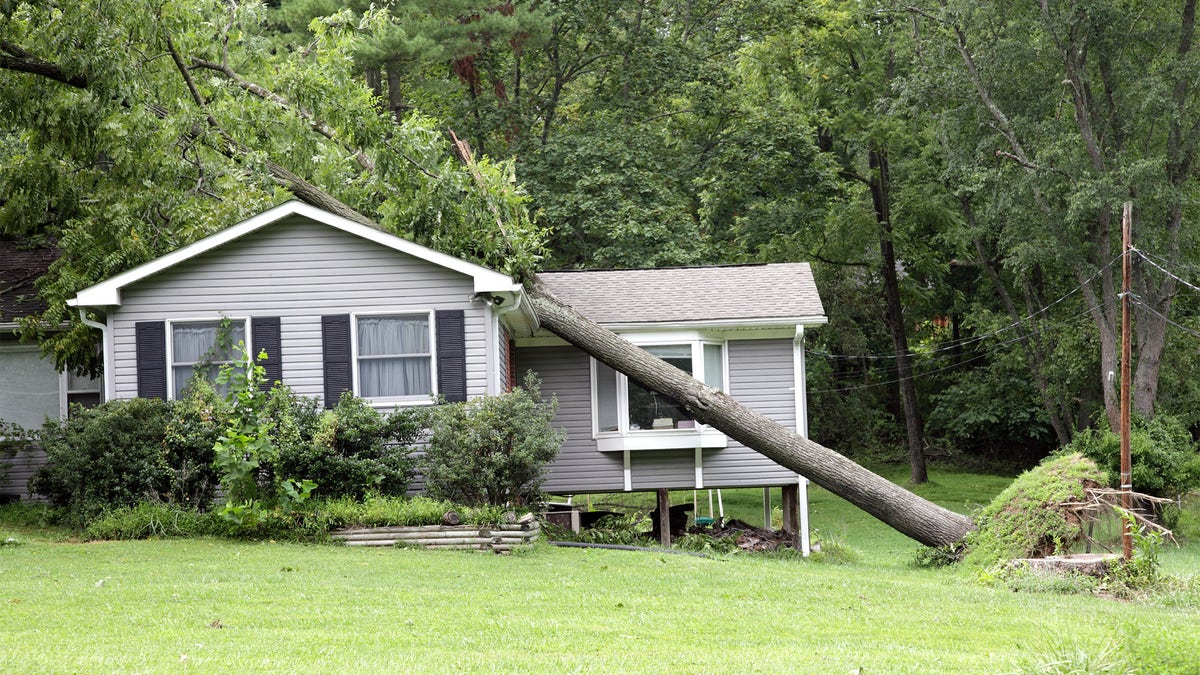
fallen-tree
When Crystal Kendrick bought a 150-year-old Colonial in Cincinnati that had been vacant for seven years, she knew the house would need a total, down-to-the-studs renovation, and she was fine with that. But what she wasn't prepared for was the tree.
Shortly after beginning her home improvements, Kendrick learned that the roots from the 40-foot orange tree in the backyard had crept into the sewer lines -- requiring that she replace the busted and tangled pipes. Then she learned that the roots had also caused the home's foundation to tilt. Kendrick cut down the tree, and spent $19,000 more fixing the damage.
The experience left such a bad taste in her mouth, she refuses now to plant even one tree in its place."I'll plant grass," she says. "That's all."
Moral of the story? Trees may be beautiful, but they can cause major problems that cost tons of money (and no small amount of heartache) to fix. So before you swoon over some foliage, check out some of the damage it can do, and learn how to stop these homewreckers in their tracks.
Root of the problem
When underground sewer and water pipes develop small cracks, roots can quickly catch a foothold and widen those rifts. Next thing you know, you've got a choked or burst line and pools of water and sewage in your yard. Even worse, roots can burrow beneath your foundation and lift the house; or they can leach water from the ground during dry spells and sink or settle the house unevenly.
To fight back: Luckily, only certain trees have shallow or invasive roots that can do damage to a home. Here are the most insidious evildoers to keep an eye out for:
- Hybrid poplars (Populus)
- Willows (Salix)
- American elm (Ulmus Americana)
- Silver maple (Acer saccharinum)
If you must grow (or keep) these trees on your property, make sure you don't plant one closer than 10 feet from your home's foundation; 20 to 30 feet from water and sewer lines; or 10 feet from driveways and patios.
Also make sure to keep an eye out for signs of trouble. Clues that roots have clogged pipes include slow-flowing drains, as well as gurgling from toilet bowls. If you suspect a problem, sewer cleaning companies can send a camera down the line and look for clogs.
Crash warning
Above ground, trees can cause other problems for homes when they get pummeled by severe storms, wind, or lightning. This can send trees or branches crashing onto your yard, or even through the roof of your house.
In April, a Detroit homeowner who'd been complaining to the city for years about a rotting tree in front of his house saw his worst fears realized when it came crashing down during a storm and crushed his van parked in front of the house.
In February, a storm in Cincinnati caused an 80-foot tree to crash right through one homeowner's bathroom ceiling (which the homeowner luckily wasn't using at the time).
To fight back: Dead or dying trees are particularly vulnerable because branches are already brittle. You can tell a tree is dead or dying if:
- The tree doesn't leaf out in spring, or it produces small, discolored leaves.
- Splits appear in trunks and branches.
- Trunks become hollow.
- Fungi such as mushrooms grow on branches or root flares.
- Trees tilt more than 15 degrees from straight up.
To protect trees from lightning strikes, hire an arborist to ground the tree with a copper cable system, which can cost up to $1,500 but can prevent damage that would cost much more.
A silent scourge waiting to strike
It's sometimes hard to look at a beautiful tree and predict all the ways it can wreck your property. Home inspectors don't typically assess landscaping health, either. That's what trained arborists -- aka "tree surgeons" -- are for.
Mike Galvin, president of the American Society of Consulting Arborists, says house hunters can hire these pros to conduct a risk assessment of trees before buying a property. The arborist will begin by looking for obvious tree defects such as holes on trunks and dead branches, and can dive as deeply as taking tree and soil samples and using diagnostic tree radar to see inside the tree and look for rot.
From there, you can also ask an arborist or landscape professional to inspect trees annually for root rot, dead branches, and trunk cracks. Homeowners should also prune trees every two years to raise canopies, remove dead branches, and keep tree limbs away from roofs and neighboring properties, says Adam Morelock, a landscape expert with The Grounds Guys, a nationally franchised landscape and lawn care company based in Waco, TX.
If you've got a tree that's stirring up problems for your home, you have some options:
- Remove the tree, which will rob you of shade and beauty but could protect life and limb (yours, not the tree's).
- Move the tree, which depends on age and size. Younger trees are more likely to survive the move than older trees, which could cost "tens of thousands" to transplace, Galvin says.
- Tame the roots by either pruning them, blocking them with plastic barriers, or applying a growth inhibitor that will redirect the tree's energy toward fighting disease and pests, rather than growing roots and branches.
-- -- -- -- --
More from realtor.com: Do You Need to Remodel Before You Sell?